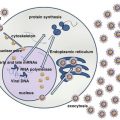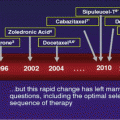Entity
Dysplasia
Peripheral blasts
Bone marrow blasts
Ringed sideroblasts
Cytogenetics
5q − syndrome
Mostly DysE
<1 %
<5 %
<15 %
5q − sole
RA, RN,RT, RCUD
DysE, N, T
<1 %
<5 %
<15 %
Various
RARS
Mostly DysE
0
<5 %
>15 %
Various
RCMD
2−3 lineages
Rare
<5 %
Various
RAEB-1
1−3 lineages
<5 %
5–9 %
<15 %
Various
RAEB-2
1−3 lineages
5–19 %
Auer rods ±
10–19 %
Auer rods ±
<15 %
Various
MDS-U
1 lineage
≤1 %
<5 %
<15 %
Various
9 Prognosis
The natural history of MDS is extremely variable and depends on a range of factors, including the number and degree of cytopenias, the extent of dysplasia, and the specific cytogenetic subtypes. Many other features have been recognized as having an association with outcome, but the most important of these have been combined in prognostic scoring systems, the most common of which are the International Prognostic Scoring System (IPSS), the more recent revised IPSS (IPSS-R), the MD Anderson Cancer Center (MDACC) MDS Model, and the WHO Prognostic Scoring Systems (WPSS) [3, 4].
As a general rule, patients are classified into lower and higher risk MDS subgroups with therapeutic decision-making based on where in these subgroupings a patient finds himself/herself.
10 Management
Treatment decisions are usually made based on the need for treating the underlying disease, supportive care, and modifying the natural cause of the disease to prevent, diminish, or delay the development of complications.
Immediate treatment may be indicated for symptomatic cytopenias, such as transfusion for anemia or thrombocytopenia complicated by bleeding. Asymptomatic patients are usually monitored over time for the development of cytopenias or other complications.
Treatment decisions are usually based on the patient’s general condition, comorbid diseases, prognosis, and likelihood of developing acute myeloid leukemia. Lower risk MDS patients are usually given supportive care and, depending on specific laboratory findings, may be treated with growth factors (i.e., G-CSF and/or erythropoiesis-stimulating agents (ESAs), immunosuppressive therapies, or specific treatments targeting the underlying disease (e.g., lenalidomide for 5q- syndrome, azacitidine, decitabine, etc.). More definitive treatment strategies for MDS are often very expensive and require significant expertise in its management. Guidelines by the National Comprehensive Cancer Network (NCCN) and the European LeukemiaNet (ELN) are frequently updated and provide practical guidance on decision-making. All patients should be evaluated for the need and practicality of hematopoietic stem cell transplantation as this remains the only form of cure at present [11]. Due to the fact that MDS is mainly a disease of the elderly and often accompanied by comorbid disease, stem cell transplantation is generally limited to a minority of patients [5]. It is advised that all patients be evaluated for enrollment into clinical trials.
Stay updated, free articles. Join our Telegram channel

Full access? Get Clinical Tree





